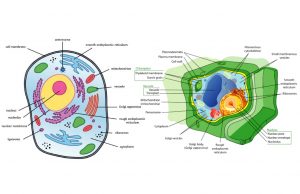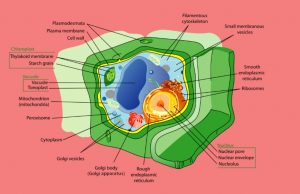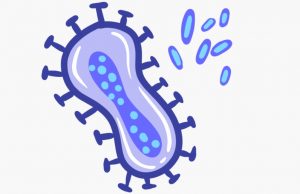Differences between Plant and Animal Cell: Life’s structural and essential unit is the cell. The cells are made up of several or single cells that each conduct their function. Both plant and animal cells include several cell organelles that assist them in performing essential cellular functions. However, just a few organelles are unique to both plant and animal cells.

Robert Hooke, a scientist and architect from England, discovered it in 1665. Because both plants and animals include eukaryotic cells, their cell structures are quite comparable. A plasma membrane, nucleus, cytoplasm, ribosomes, and mitochondria, in general, make up each eukaryotic cell.
Recommended: Differences between the vein and the arteries
What are Plant Cells?
Plant cells are eukaryotic cells found in organisms that belong to the plant kingdom. The nucleus is absent from eukaryotic cells. The organelles contained in plant cells vary from those found in other eukaryotic cells. Organelles are the cell’s most important components.

The main distinction between the plant cell and the animal cell is that the plant cell has a hard cell wall surrounding its cell wall. The cell wall surrounds the cells of other species, while the proteins and cellulose are contained within the plant cell. The plant’s form and structure are determined by the cell wall, which protects the cell.
Chlorophyll is also found in plant cells. Chlorophyll is the greenish pigment that gives plants their colour and enables them to undergo photosynthesis. Photosynthesis is a process in which plants employ carbon dioxide, water, and sunshine to create their sustenance.
Large central vacuoles can be seen in plant cells. Plant cells, like those of other eukaryotes, include bigger organelles called vacuoles.
Also see: Best science courses to study in the university
Functions of Plant Cells
Plant cells are the smallest basic building components of plant life, and ultimately perform every process required for survival. The process of creating food via light energy, carbon dioxide, and water is known as photosynthesis. It takes place in the cell’s chloroplasts.
A mature plant’s cells become specialized to conduct specific key activities that are required for survival. Here are some examples of specialized plant cells:
1. Collenchyma Cells: They have strong cell walls, are lengthy with the ability to change shape and expand as the plant grows.
2. Sclerenchyma Cells: Sclerenchyma cells have more stiff cells. They are the primary sustaining cells of a plant’s dormant zones. These cells have incredibly rigid cell walls and are dead.
3. Parenchyma Cells: Parenchyma cells make up the majority of plant cells. Photosynthesis and cellular respiration, as well as the metabolic process, are carried out by them in leaves. They also play a function in plant healing and store chemicals like carbohydrates and proteins.
4. Xylem Cells: It carries largely water and a few minerals from the roots to the stem and leaves of the crop.
5. Phloem Cells: It carries nutrients produced during photosynthesis to all sections of the plant. They also transmit sap, which is a sugary watery fluid.
Also see: Most profitable skills to learn in 2022
What are Animal Cells
Animal cells, unlike eukaryotic cells in plants, do not have a cell wall. They are made up of different organelles and cellular structures that perform specialized duties that are required for the cell to work correctly. The primary distinction between animal and plant cells is that animal cells are unable to produce their sustenance. The animal body contains billions of cells, each of which is unique in terms of function and kind.

The nucleus, cell membrane, and cytoplasm are the three primary components of most animal cells. The cell’s nucleus directs the cell’s activities. All action is directed to the cell. The nucleus can create cell organelles as required. The nucleus is the cell’s brain. A membrane encircles the nucleus of an animal cell. Animal cells are protected by their cell membrane. They keep dangerous items out of the cell and only let beneficial objects in. It guards the cell. The majority of an animal cell is made up of cytoplasm. It aids in shaping the cell and the placement of the organelles. When organelles need to move materials across the cell, the cytoplasm facilitates the process. It also aids in the degradation of cellular waste.
Recommended: Characteristics of enzymes
Functions of An Animal Cell
The cells are very specialized to do the tasks at hand. Every one of the cells works together to keep the organism alive by coordinating its functions.
Multiple cells will combine to create tissues, which will aid in the performance of numerous activities. The many organs of the body, such as the heart, lungs, and the neurological system, the digestive system, and the circulatory system, are formed by groups of similar tissues, and these organs work together to form the organ system. Organ systems differ depending on the organism.
Also see: Best paying countries to practice medicine and surgery
Differences between Plant and Animal cells
Membrane-bound organelles such as the endoplasmic reticulum, nucleus, mitochondria, Golgi apparatus, Lysosomes, and others are found in both plant and animal cells. Similarly, plant and animal membranes, such as cytosol and cytoskeletal components, are comparable. Between the two types of cells, the functions of these organelles are remarkably similar.
The following are the key differences in the structure of plant and animal cells:
1. Shape and size: Animal cells are smaller than plant cells, ranging in size from 10 to 30 micrometres in length. Animal cells are present in a variety of shapes and sizes, ranging from uneven to circular, and are mostly determined by the role they perform.
Plant cells are bigger than animal cells, varying sizes from 10 to 100 micrometres in length. Plant cells are usually rectangular or cube-shaped.
2. Cell Wall: Animal cells do not have a cell wall, but they do have a plasma (cell) membrane, which serves to maintain and shield the cell from external harm. It also plays a key role in selective permeability, which allows nutrition molecules, water, and other cell constituents to flow in and out.
Plant cells feature both a cell membrane and a cellulose-based cell wall. The cell wall is a stiff membrane matrix that covers the outside of all plant cells and serves to protect the cell and its contents.
Recommended: Advantages and Disadvantages of a written constitution
3. Plasma Membrane: Animal cells have a plasma membrane, which is a thin, elastic membrane that serves as a protective coating for the animal cell. It possesses selective permeability as well. Plant cells have a cellulose-based plasma membrane immediately underneath the cell wall that permits selective permeability of cell contents.
4. Cytoplasm: All of the cell organelles are housed in the cytoplasm of animal cells. The majority of the cell organelles are found in the cytoplasm of plant cells.
5. Vacuoles: Animal cells can have a lot of small vacuoles, which are much smaller than plant cells. A large central vacuole in plant cells can take up to 90% of the volume of the cell.
6. Nucleus: It is found in animal cells and is located in the cell’s centre. In plant cells, it can be found on the cell’s side.
7. Centrioles: They are found in animal cells, and their primary function is to aid in the cell division process. They don’t exist in plant cells.
8. Ribosomes: Ribosomes are found in animal cells and are responsible for protein synthesis as well as genetic coding of protein amino acid sequences. Ribosomes are found in plant cells and are utilised for protein synthesis and cellular repair.
9. Plastids: Plastids aren’t found in animal cells. Plastids can be found in plant cells. Plastids are sac-like organelles with two membranes that are used in the production or storage of food. (which are required for photosynthesis to take place).
Also see: Features/Characteristics of Scientific Knowledge
Conclusion
Plant and animal cells show commonalities because they are both eukaryotes. However, animal and plant cells show substantial differences. Except for a few organelles, all eukaryotic cells, whether plant or animal, share the nucleus and a few organelles, as well as similar functions. Plants are autotrophs, while animals are heterotrophs, which explains the distinction.

Edeh Samuel Chukwuemeka, ACMC, is a lawyer and a certified mediator/conciliator in Nigeria. He is also a developer with knowledge in various programming languages. Samuel is determined to leverage his skills in technology, SEO, and legal practice to revolutionize the legal profession worldwide by creating web and mobile applications that simplify legal research. Sam is also passionate about educating and providing valuable information to people.